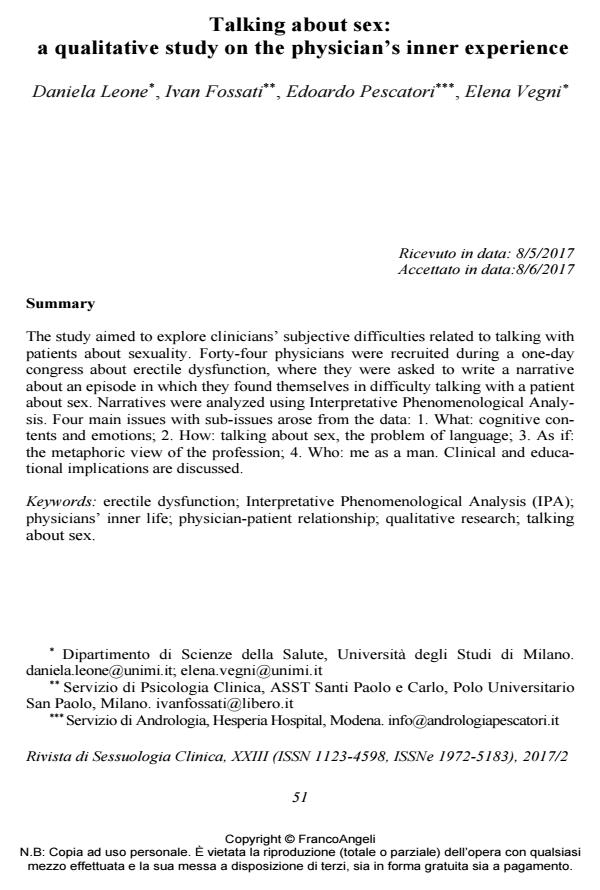Talking about sex: a qualitative study on the physician’s inner experience
Journal title RIVISTA DI SESSUOLOGIA CLINICA
Author/s Daniela Leone, Ivan Fossati, Edoardo Pescatori, Elena Vegni
Publishing Year 2017 Issue 2017/2
Language English Pages 19 P. 51-69 File size 258 KB
DOI 10.3280/RSC2017-002004
DOI is like a bar code for intellectual property: to have more infomation
click here
Below, you can see the article first page
If you want to buy this article in PDF format, you can do it, following the instructions to buy download credits

FrancoAngeli is member of Publishers International Linking Association, Inc (PILA), a not-for-profit association which run the CrossRef service enabling links to and from online scholarly content.
The study aimed to explore clinicians’ subjective difficulties related to talking with patients about sexuality. Forty-four physicians were recruited during a one-day congress about erectile dysfunction, where they were asked to write a narrative about an episode in which they found themselves in difficulty talking with a patient about sex. Narratives were analyzed using Interpretative Phenomenological Analysis. Four main issues with sub-issues arose from the data: 1. What: cognitive contents and emotions; 2. How: talking about sex, the problem of language; 3. As if: the metaphoric view of the profession; 4. Who: me as a man. Clinical and educational implications are discussed.
Keywords: Erectile dysfunction; Interpretative Phenomenological Analysis (IPA); physicians’ inner life; physician-patient relationship; qualitative research; talking about sex.
Daniela Leone, Ivan Fossati, Edoardo Pescatori, Elena Vegni, Talking about sex: a qualitative study on the physician’s inner experience in "RIVISTA DI SESSUOLOGIA CLINICA" 2/2017, pp 51-69, DOI: 10.3280/RSC2017-002004